Onset HOBO RX3000 Remote Soil Monitoring Station
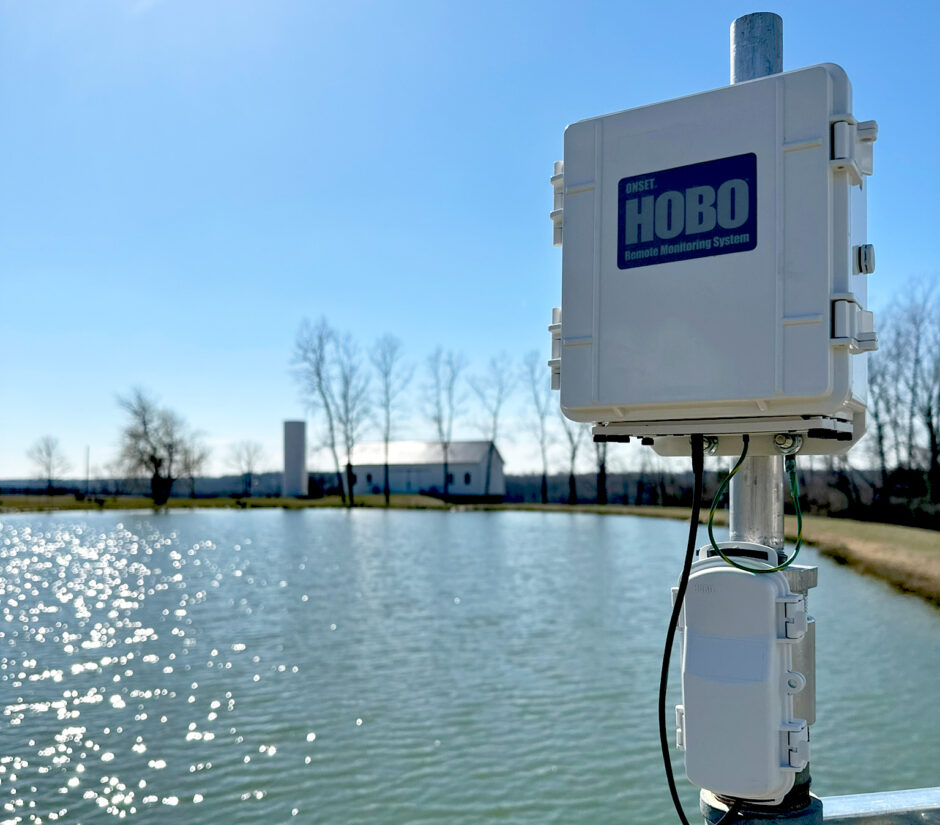 Onset HOBO RX3000 Remote Soil Monitoring Station (Credit: Katelyn Kubasky)
Onset HOBO RX3000 Remote Soil Monitoring Station (Credit: Katelyn Kubasky)The Onset HOBO RX3000 Remote Monitoring Station is an environmental monitoring system that continuously logs data from compatible sensors that measure soil moisture, water level, temperature and various weather parameters. With numerous options for remote monitoring systems, Onset provides a Build-a-system configurator to help with ordering a system fit for any project’s needs. The configurator easily guides the user through the process of selecting different types of communication, power, sensor and other site-specific requirement selections when building their ideal system.
The RX3000 ships with mounting plates and hardware, rubber cable channels, rubber plugs, grease, grounding wire and U-bolts. When deploying an RX3000 system, there are additional items that will need to be purchased that do not come with the unit itself. Options include tripod kits, mast poles, solar panels and radiation shields for site-specific deployment.
Soil Moisture and Temperature
Measuring soil moisture remotely ensures a faster response time for scientists, agronomists and farmers to make significant decisions quickly. The main goal is to avoid stress on crops due to underwatering or other events, so agriculture managers who need to rely on real-time soil moisture data to aid with irrigation schedules can save time and money by not having to go to the site directly.
Soil moisture depends on many things in the environment, such as the local climate, temperature and soil type. Because microclimates can exist within a site, knowing the site dynamics is important when planning the ideal place to install wireless sensors.
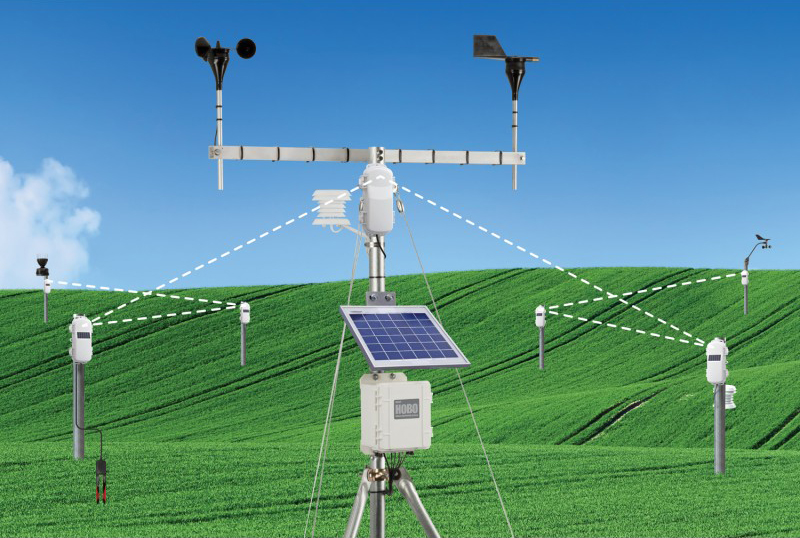
An illustration of a HOBOnet Field Monitoring System with multiple sensor motes at a deployment site. (Credit: HOBO)
There are many ways to measure soil water content (SWC). The most common ways to measure soil moisture are volumetric water content (VWC) and soil matric potential (SMP). The Onset HOBOnet Wireless EC-5 Soil Moisture Sensor measures volumetric water content as the dielectric constant in soil, and outputs data in m3/m3. According to Onset, a value of 0–0.1 m3/m3 indicates dry soil, whereas a value of 0.3 or higher indicates properly saturated soil.
Temperature is measured by the system’s (2) HOBOnet Wireless Outdoor Temperature Sensors, which have a measurement range of -40° to 100°C. The sensors include a stainless steel probe tip, 5m cables and internal AA batteries that are rechargeable via the external solar panel located on the outside of the sensor mote. Due to the effects of solar radiation on temperature readings, a radiation shield needs to be installed around the sensor to mitigate the effects.
Both the soil moisture and temperature sensors communicate via a radio network that is managed by the RXW manager connected to the cellular base station. The outdoor temperature sensors and soil moisture sensors are set to log data every 15 minutes and transmit those readings via radio to the RX3000 station.
Wireless Sensor Networks from Onset
There are 23 additional sensors available for the remote monitoring station for parameters such as water level, soil water potential, wind speed and direction, rain, solar radiation, PAR and even leaf wetness. There are smart sensor connections available for up to 15 smart sensors at once (limited because some utilize the same digital signal). With up to 50 wireless motes available when the 900 MHz wireless manager module is connected, there are endless applications for the RX3000.
Weather stations with rain gauges, wind speed and direction are available to add a robust monitoring station in environments that are not easily accessible for frequent site visits. With the option for either solar or AC power, remote water level monitoring systems have been added to rivers, creeks and weirs where real-time is needed.
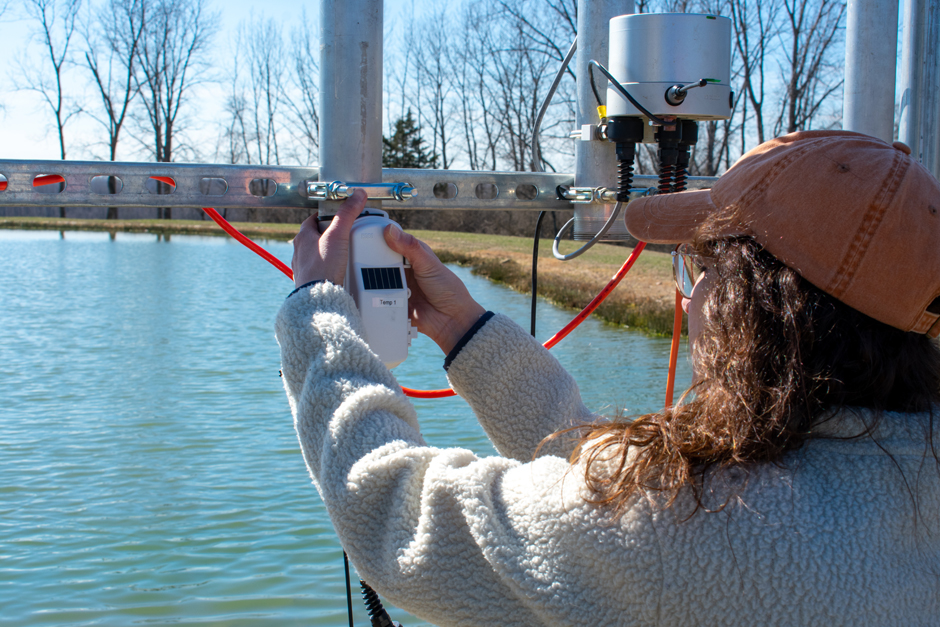
RX3000 system being deployed at the Fondriest Environmental Field Station by Environmental Scientist, Katelyn Kubasky. (Credit: Emma Jones / Fondriest Environmental, Inc.)
IoT Data
The Internet of Things (IoT) encompasses the communication exchange between sensors, software and other technologies over the internet or other networks. The Onset RX3000 Remote Monitoring Station really embodies the concept of IoT, being that the station has the ability to communicate with multiple wireless sensor motes at one time via radio, with connected sensors also collecting data and being able to push that data to the cloud in real-time.
Once the base station receives the data, transmission to the cloud is facilitated by cellular 4G LTE and is available via the HOBOlink live data dashboard. A HOBOlink account will need to be established for setting up and reviewing station settings such as transmit and sample intervals, site descriptions, output units, dashboards and more.
Environmental IoT is used to stay ahead of emergencies and system malfunctions, minimize site visits or sampling trips, and allows the user to receive easy-to-assess data quickly. Before cloud data accessibility became commonplace, scientists and agronomists spent tireless hours in the field and the lab collecting and processing samples. Costly frequent site visits and constantly watching over crops are a thing of the past, thanks to IoT monitoring systems.
Configuring the Station with Hobolink Software
Setting up the system is quick and painless, thanks to the provided quick start guides, mounting accessories and tools. After unboxing each component, the RX3000 base station must be configured and registered to the HOBOlink website.
Once a test of the station’s communication is complete, the next step ensures that wireless sensors are connected and in range. The complete system setup for the field station includes the RX3000 remote data logging station, two HOBOnet wireless outdoor temperature sensors, one HOBOnet wireless soil moisture sensor and a wireless manager module. After the wireless temperature and soil moisture sensors are paired with the station, configuring sample intervals and alarms are done online through the HOBOlink online.
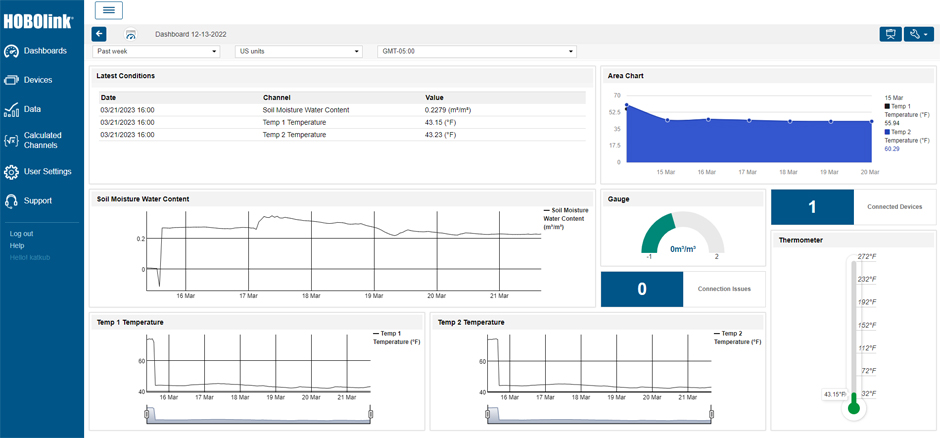
Screenshot of HOBOlink dashboard containing live data from the Fondriest Field Station Onset HOBO RX3000 system.
The dashboard makes it easy to view both real-time and historical data in addition to system diagnostics such as battery life and logger connectivity. Having a live dashboard that can be accessed 24/7 by a manager, farmer or scientist allows for quick action when microclimates change and irrigation schedules need to be altered.
Data export is straightforward, with options to send reports from the past week, day, hour or custom range in either CSV or Excel format. Data can also be sent to an external server or to an email address on a specific schedule, keeping necessary personnel informed every step of the way. There are even options to integrate the RX3000 with data live feeds like Weather Underground, NEWA or Aquarius.
Deploying at the Farm
Scientists from Fondriest Environmental wanted to learn more about soil moisture and temperature, so they selected (2) Onset HOBOnet Wireless Outdoor Temperature Sensor motes and (1) Onset HOBOnet Wireless EC-5 Soil Moisture Sensor, transmitting to the Onset RX3004-00-01 base station. These sensors collect data on soil moisture and temperature and send data back to the RX3000 via 900 MHz wireless mesh self-healing radio technology, facilitated by the HOBO RX3000 RXW Manager.
At the farm, scientists installed the base station and sensor notes on an existing mast system using U-bolts and zip-ties. The sensor nodes, which communicate via radio to the base, needed to be mounted within range of the station to ensure accurate data collection with no interruptions. After doing a few system verification checks, such as sensor connectivity and cellular connection, the RX3000 was powered up and began collecting data.
Using this real-time soil moisture system, the Fondriest Environmental Science Team can keep tabs on critical soil moisture data from afar, ensuring that crops and other vegetation are receiving ample moisture.
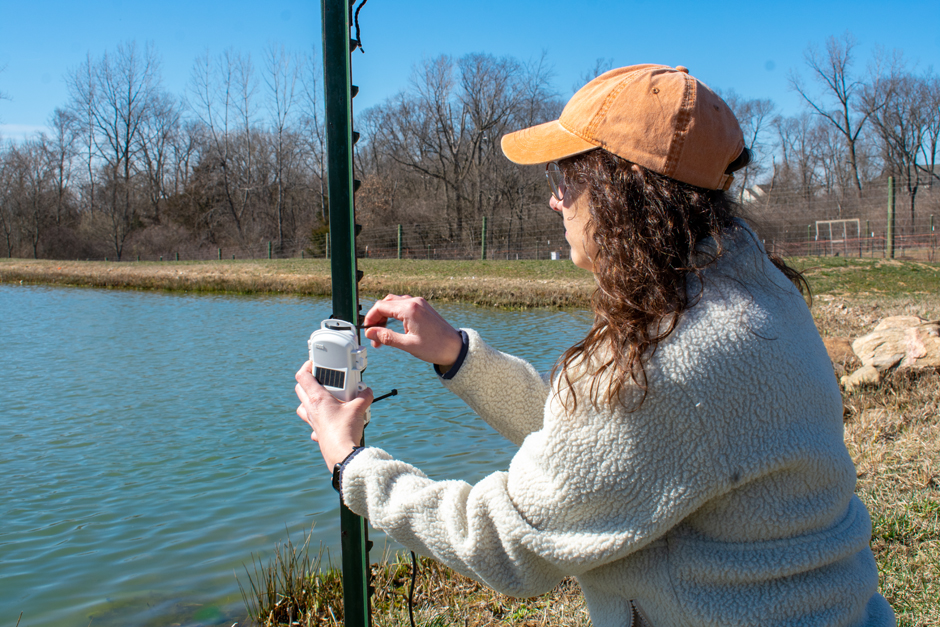
Environmental Scientist Katelyn Kubasky secures the Onset soil moisture probe sensor mote to a pole at the field station. (Credit: Emma Jones / Fondriest Environmental, Inc.)




0 comments